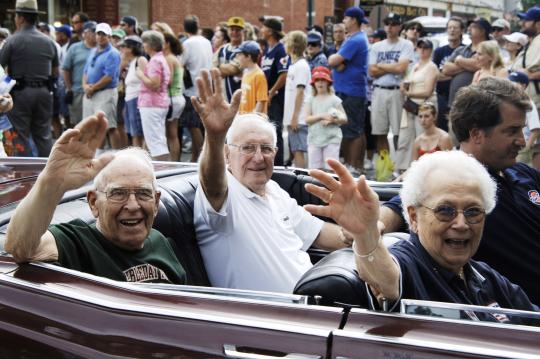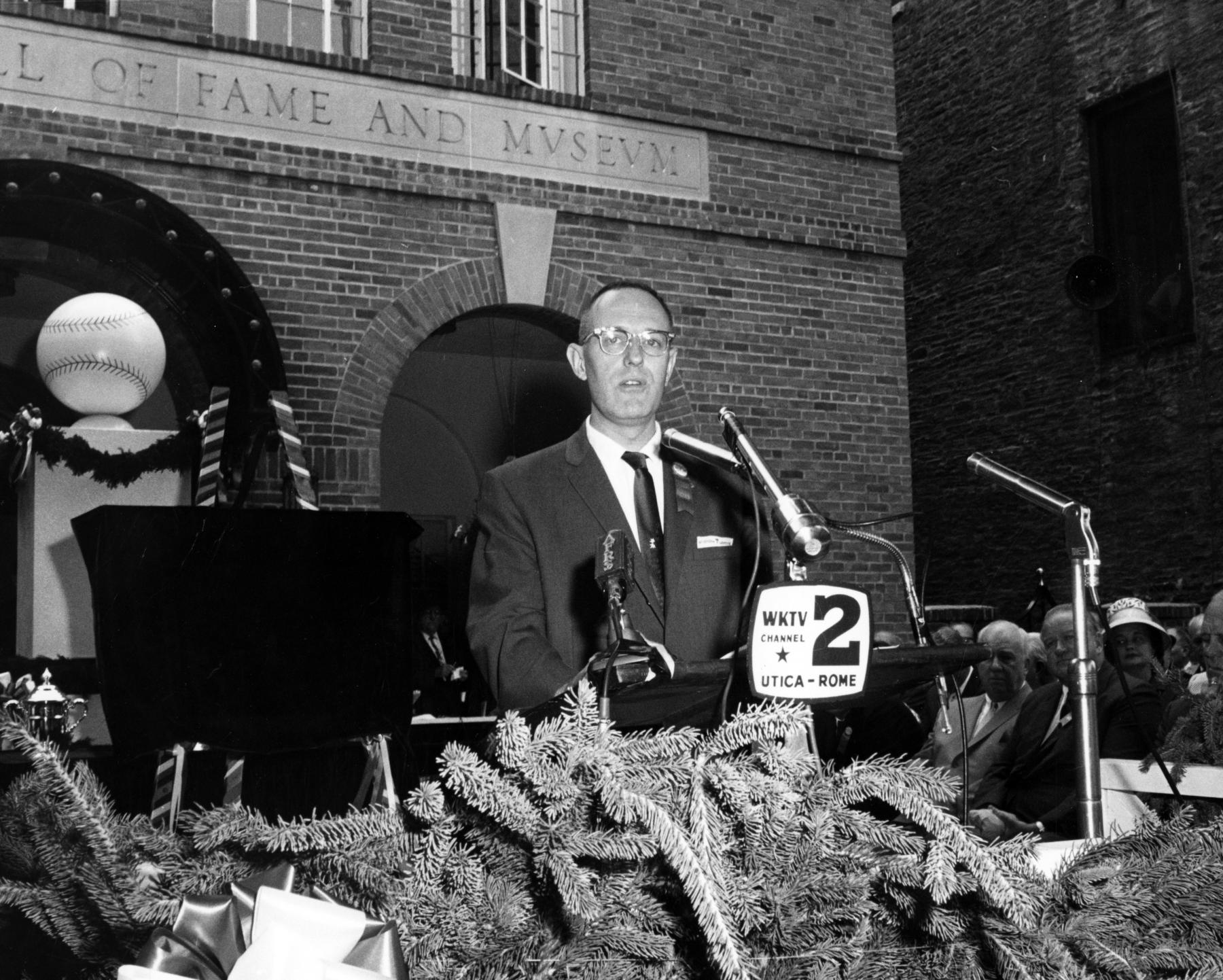You have to remember there was no TV. It’s safe to say that at least 90 percent of the people there that day had never seen a major league game played. I know I hadn’t.
Remembering Howard Talbot
Back on June 12, 1939, when the Hall of Fame was officially dedicated and the first Induction Ceremony took place on Main Street in front of the Museum, Talbot was an eyewitness to baseball history, the teenager having been escorted to Cooperstown by his father from their nearby home.
“It was a pretty big day for a little burg like Cooperstown,” Talbot said. “You have to remember there was no TV. It’s safe to say that at least 90 percent of the people there that day had never seen a major league game played. I know I hadn’t. I never thought it was something that would become a yearly thing, recognized around the world. I just thought it was a nice day for Cooperstown.
“For a 14-year-old it was overwhelming, believe me. No question about it,” he added. “I think the biggest thing that I remember was the fact that Ty Cobb was late getting there and he had to climb up over the railing of the stage at the start of the Induction Ceremony.”
Former Vice President and Chief Curator Ted Spencer began working at the Hall of Fame in 1982 and retired in 2009.
“When I look back on my time working alongside Howard, what comes to mind is the way he looked on his staff in an almost paternalistic way, not in a negative sense, but really considered us all a family,” Spencer recalled. “And, of course, the time we worked together he was very involved in raising the educational aspects of the institution as a part of an overall mandate to increase our perception in the museum world.”
During Talbot’s tenure as the Hall of Fame’s director, he made education his main focus, and oversaw three major expansion and renovation programs, including the enlargement of the Plaque Gallery and the National Baseball Hall of Fame Library.
“In the 1950s, we really began to realize that we were two institutions under one roof — a Hall of Fame, where we honored the all-time greats, and a Museum, where we told the history of baseball,” Talbot said. “We needed to build a gallery to make that distinction and accommodate the growing number of elected members.”
Talbot developed numerous longstanding relationships through his work, including those of Hall of Famers and baseball writers. Jim Henneman, a past president of the Baseball Writers' Association of America now in his seventh decade covering the Orioles, first met Talbot in 1983, the year Orioles third baseman Brooks Robinson was inducted into the Hall of Fame.
“We, along with his wife, Alice, have remained close friends ever since,” Henneman wrote recently. “Five years ago, when my four brothers and I took a ‘road trip’ to Cooperstown, a highlight was having Talbot join us in our cottage for pizza and beer.
“He regaled us with stories for a couple of hours, seemingly enjoying it as much as we did. Had it not been for his desire to return home and make sure Alice was comfortable, I have no doubt he could've hung out as long as we could – and enjoyed it just as much.”
Henneman didn't get to see the Talbots last summer because both were dealing with some health issues.
“When I was in Cooperstown for a meeting in January, we had a chance to talk, but Howard, who was 89, wasn't quite up for a visit. ‘I'll be in better shape this summer,’ Howard said, ‘and we can get together then,” Henneman wrote. “This is my 21st trip to for Induction Weekend. The ride isn't going to be the same. Cooperstown will be the same, because it is always the same, but this time something will be different.
“Howard Talbot won't be there. I'm going to miss him, but take some solace in the fact that the last words he said to me – ‘I'll be in better shape this summer’ – are true. Painful, maybe, but true. R.I.P. my friend. A Hall of Famer if ever I met one.”
Bill Francis is a Library Associate at the National Baseball Hall of Fame and Museum




